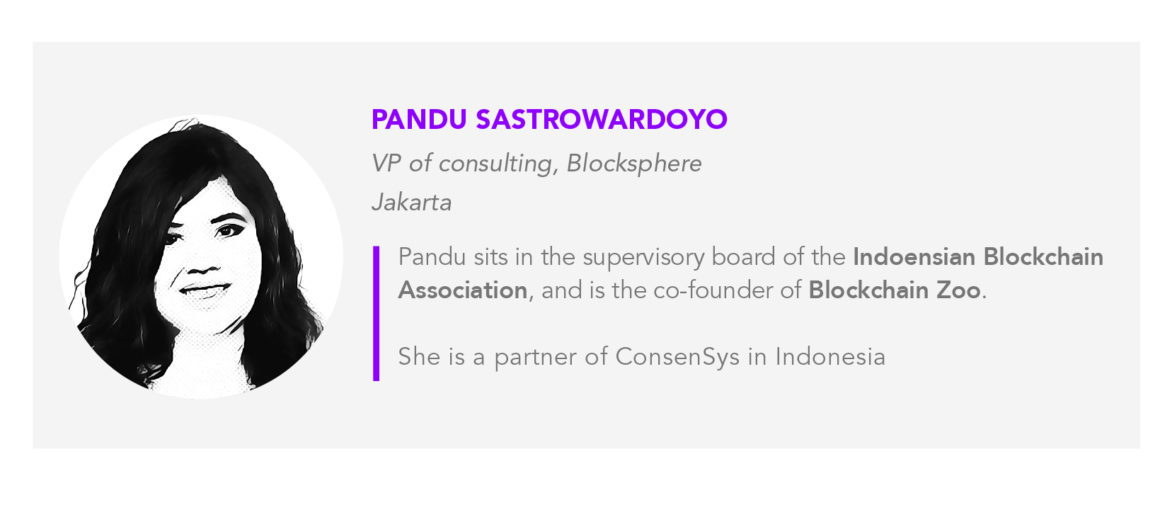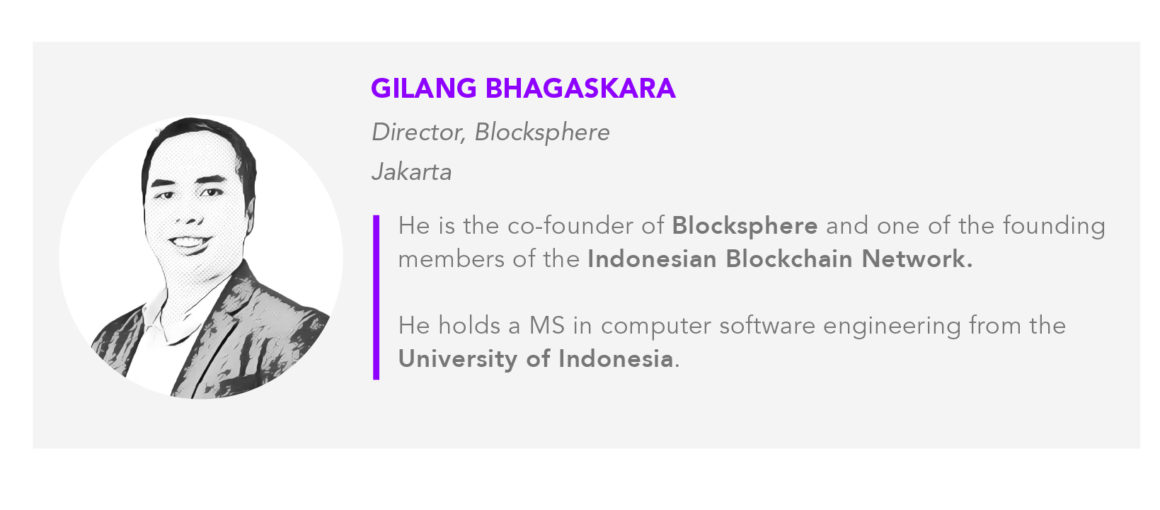Across the Indonesian archipelago, revolution is in the air. It’s one that centers on digital cash and units of value; one that could not only transform the so-called “new order” of financial activities — fintech, cryptocurrency, coin offerings and decentralized finance — but also the sovereignty of national assets and currency.

It is a revolution borne of the intermarriage between established, traditional economic structures, such as central banks and bricks-and-mortar financial institutions, and new decentralized models of value exchange technology. This fusing of systems will enable, among other things, the launch of central bank digital currencies, commonly referred to as CBDCs.

For Indonesia, this dovetailing of technology and process — both old and new — has the potential to be truly transformative. It could see the country jump from being a regional laggard to a leader with the provision of financial services that reach all corners of the country, including the islands. Indonesia could leapfrog other countries that are burdened with legacy infrastructure, giving it huge economic impetus.
CBDCs are special cryptographic assets backed by a country’s financial sector governing bodies and institutions. Cryptographic assets are transferable digital representations that are created in a way that prohibits copying or duplication.
Since their launch with the first bitcoin back in 2009, crypto assets have faced a number of challenges, the three big ones being: unreliable technology, causing outages and security issues; poor user experience, exacerbated by a lack of user understanding; and the extreme price volatility of the assets, in part due to them not being asset-backed.
But that’s changing.
As the name suggests, stablecoin came about as an attempt to reduce volatility. Following the example of Tether tokens, a form of stablecoin backed by the U.S. dollar, and Libra (recently renamed Diem), backed by a basket of currencies and other assets, Indonesia has seen the introduction of several stablecoins backed by the Indonesian rupiah. The Rupiah Token (IDRT), Rupiah Private (IDRP) and IDK Foundation are the current stablecoins in Indonesia, each with their own local market and traded globally on various cryptocurrency exchanges.
Bank Indonesia recognizes value of CBDCs
Keeping up with the pace of technological change has long been a challenge for regulators and, because of the inherent risks, cryptocurrency is a particular concern. Bank Indonesia, the country’s central bank, initially saw stablecoin as a threat, not least because it exists in a grey area straddling monetary policy, financial stability, market infrastructure, and supervision.
Yet Bank Indonesia now seems to recognize the value of the technology, and the research supporting the use of CBDCs. It sees that stablecoin could actually provide a solution rather than a problem.
See related article: After China’s digital currency, Indonesia may blueprint its own in 2020
As a digital currency, CBDC is supposed to run on a ledger, whether it is distributed or not. That ledger needs to serve as a single source of truth, agreed by the parties involved. It also needs central bank support, similar to the way central banks support the issuance of paper money. By controlling the supply and circulation of CBDC, central banks can establish monetary stability and reduce volatility.
In terms of its usage, CBDC is divided into two categories: wholesale and retail. Wholesale CBDC is mainly used for facilitating interbank payments between financial institutions. Retail CBDC is used for retail payments between individuals and businesses, like digital paper money. Blockchain is a suitable technology to support such transactions.
A huge number of ideas can become reality with a retail-oriented CBDC system. At present, connecting innovative technologies with traditional financial systems requires a layer of emulation. This is mainly caused by differing standards of policy and data-sharing between the existing, established, “legacy” systems and present generation fintech. Functionality that should be readily available — ease of multinational transactions, multi-party financial agreements, cross-border P2P lending — either require technological kludges to work, or have problematic, gray policy areas.
A digital rupiah for retail use
In contrast, imagine a Bank Indonesia-backed digital rupiah for a geographically decentralized country like Indonesia — a CBDC intended for retail implementation. A new fintech company with an idea could utilize the APIs and references of this digital cash, connect to a participating node hosted in a local bank, and start creating things on the platform with the same standards, service level agreements and security as in the banking system.
Indonesia has seen an explosion of new fintech companies over the past five years, but many have run into regulatory and technological difficulties. This has led to huge demand for alternative models of investment, loans and other financial instruments from the broader public. This in part reflects the nature of Indonesia’s unusual economic profile whereby only 2% of the population use credit cards, but the country has the highest rate of e-commerce use of any country in the world.
From a wholesale perspective, an Indonesian rupiah CBDC would provide a way to facilitate economic policy across all 18,000-plus islands that make up the country. Everything from the flow of aid to tracking economic performance can be improved. Additionally, liquidity savings mechanisms and national product traceability can form a bulwark against financial leakage and diversion.
Finally, both retail and wholesale digital rupiah concepts can reduce the cost of business greatly. Savings could be made both on the operational side — accounting, taxation, cross-border controls, remittances and settlements — and in disintermediation.
The reduction of intermediary actors and processes would provide a better level of service, and address a need that the archipelago requires.




